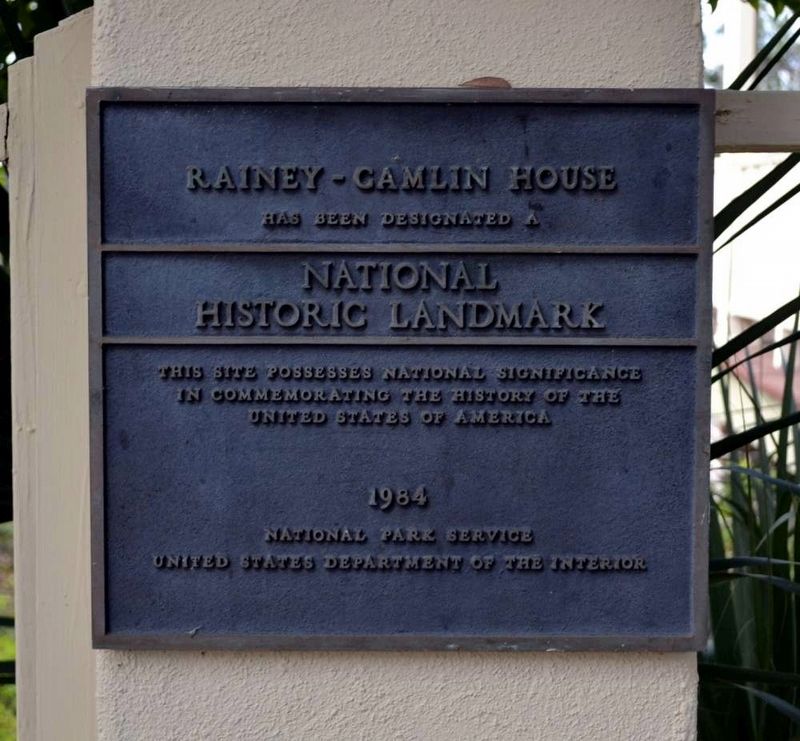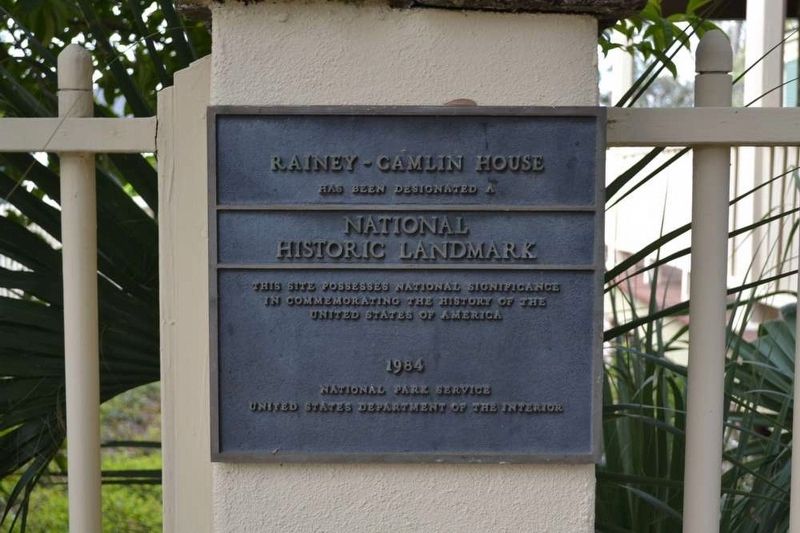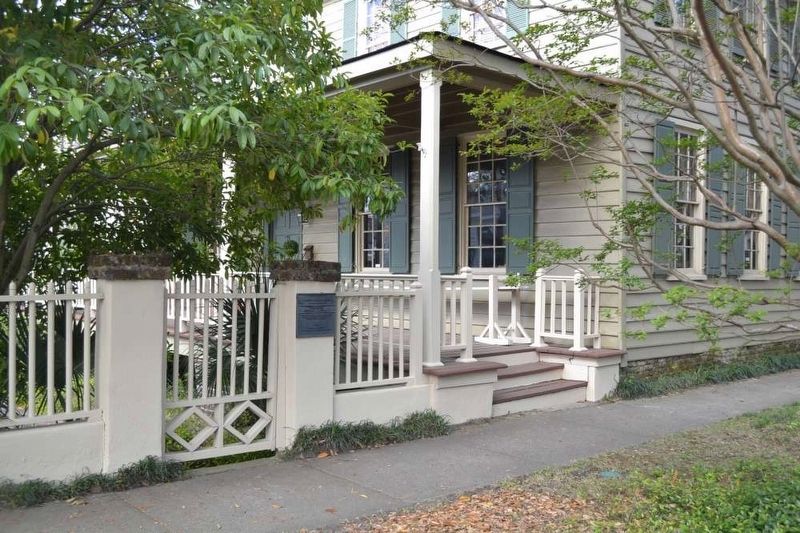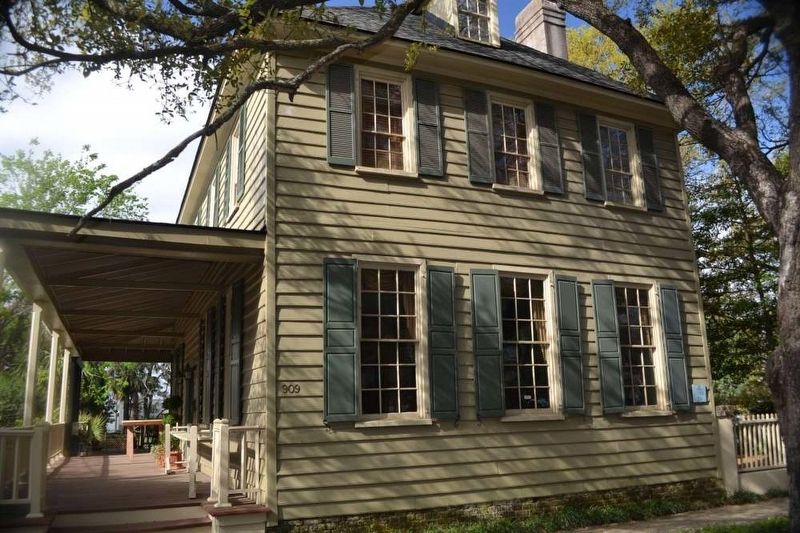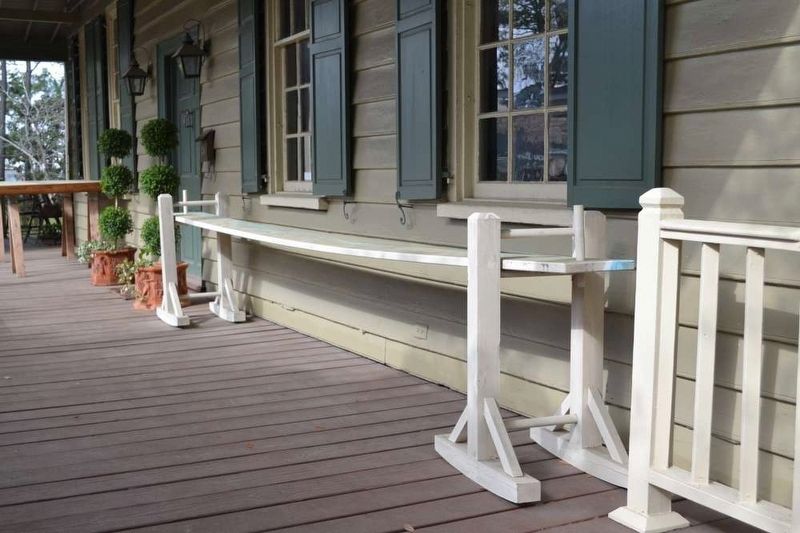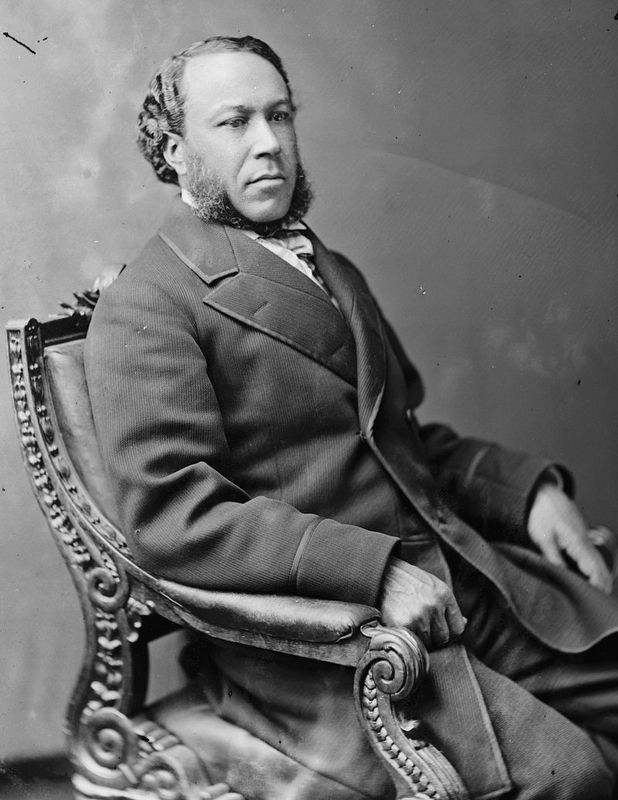Georgetown in Georgetown County, South Carolina — The American South (South Atlantic)
Rainey-Camlin House
National
Historic Landmark
This site possesses national significance
in commemorating the history of the
United States of America
Erected 1984 by National Park Service, U.S. Department of the Interior.
Topics. This historical marker is listed in these topic lists: African Americans • Notable Buildings.
Location. 33° 22.133′ N, 79° 17.05′ W. Marker is in Georgetown, South Carolina, in Georgetown County. Marker is on Prince Street, on the right when traveling north. Between King and Orange Streets. Touch for map. Marker is at or near this postal address: 909 Prince Street, Georgetown SC 29440, United States of America. Touch for directions.
Other nearby markers. At least 10 other markers are within walking distance of this marker. Joseph Hayne Rainey (within shouting distance of this marker); Methodists (about 400 feet away, measured in a direct line); James A. Bowley (about 500 feet away); 818 - 826 Front Street (about 600 feet away); City of Georgetown (about 700 feet away); These Two Cannons (about 700 feet away); Landing of Lafayette (about 700 feet away); Kaminski House (about 700 feet away); 24 Pound Naval Gun (about 800 feet away); William Doyle Morgan House (about 800 feet away). Touch for a list and map of all markers in Georgetown.
Also see . . .
1. Rainey-Camlin House. National Register nomination information. (Submitted on April 9, 2017, by Brian Scott of Anderson, South Carolina.)
2. Joseph H. Rainey House. The Joseph H. Rainey House, also known as the Rainey-Camlin House, is a historic house at 909 Prince Street in Georgetown, South Carolina. Built in the 1760s, it was the home of the first black United States Congressman, Joseph H. Rainey, a former slave. It was designated a National Historic Landmark in 1984. (Submitted on April 9, 2017, by Brian Scott of Anderson, South Carolina.)
3. Joseph H. Rainey. Joseph Hayne Rainey (June 21, 1832 – August 1, 1887) was an American politician. He was the first African American to serve in the United States House of Representatives, the second black person to serve in the United States Congress, and the first black presiding officer of the House of Representatives. Born into slavery in South Carolina, he was freed in the 1840s by his father purchasing the freedom of his entire family and himself. (Submitted on April 9, 2017, by Brian Scott of Anderson, South Carolina.)
Additional commentary.
1. Rainey-Camlin House
On December 12, 1870, Joseph Hayne Rainey (1832-1887) was sworn in as a Member of the Forty-first Congress of the United States, the first African-American person to serve in the US House of Representatives. He also served longer than any of his black contemporaries. Local tradition maintains that Rainey was born in this house and lived there until 1846, when the family relocated to Charleston. After the Civil War, Rainey settled in this house and it was from here that he launched his political career in 1867. During his tenure in Congress, it served as his district headquarters and his place of residence when Congress was not in session. He eventually died here in 1887, the house remaining in the family until it was sold in 1896. Listed in the National Register April 20, 1984; Designated a National Historic Landmark April 20, 1984.
— Submitted April 9, 2017, by Brian Scott of Anderson, South Carolina.
2. Joseph Hayne Rainey (1832-1887)
RAINEY, Joseph Hayne, a Representative from South Carolina; born in Georgetown, Georgetown County, S.C., June 21, 1832; received a limited schooling; followed the trade of barber until 1862, when upon being forced to work on the Confederate fortifications in Charleston, S.C., he escaped to the West Indies and remained there until the close of the war; delegate to the State constitutional convention in 1868; member of the State senate in 1870 but resigned; elected as a Republican to the Forty-first Congress to fill the vacancy caused by the action of the House of Representatives in declaring the seat of B. Franklin Whittemore vacant and was the first black to be elected to the House of Representatives; reelected to the Forty-second and to the three succeeding Congresses and served from December 12, 1870, to March 3, 1879; appointed internal-revenue agent of South Carolina on May 22, 1879, and served until July 15, 1881, when he resigned; engaged in banking and the brokerage business in Washington, D.C.; retired from all business activities in 1886, returned to Georgetown, S.C., and died there August 2, 1887; interment in the Baptist Cemetery. (Source: Biographical Directory of the United States Congress.)
— Submitted April 9, 2017, by Brian Scott of Anderson, South Carolina.
Credits. This page was last revised on April 9, 2017. It was originally submitted on April 9, 2017, by Brian Scott of Anderson, South Carolina. This page has been viewed 436 times since then and 22 times this year. Photos: 1, 2, 3, 4, 5, 6. submitted on April 9, 2017, by Brian Scott of Anderson, South Carolina.
